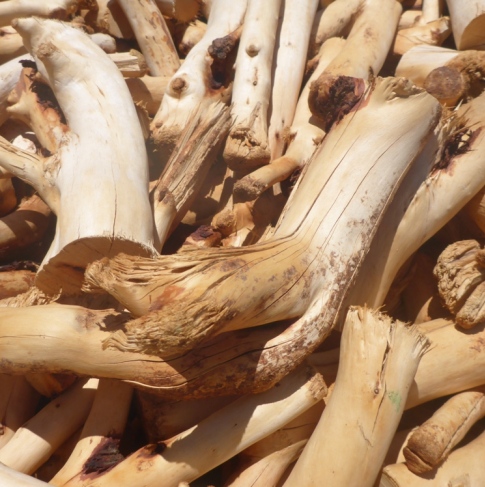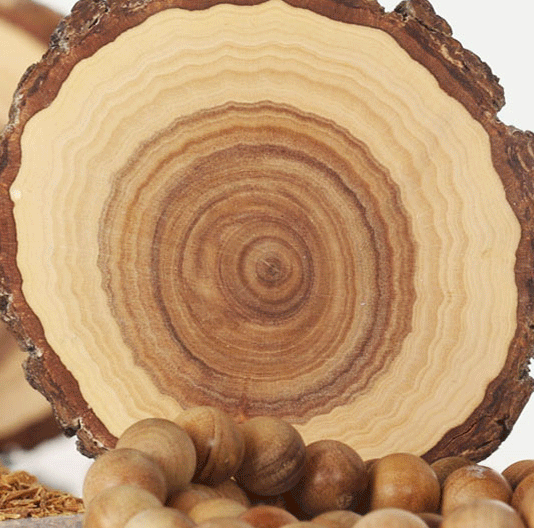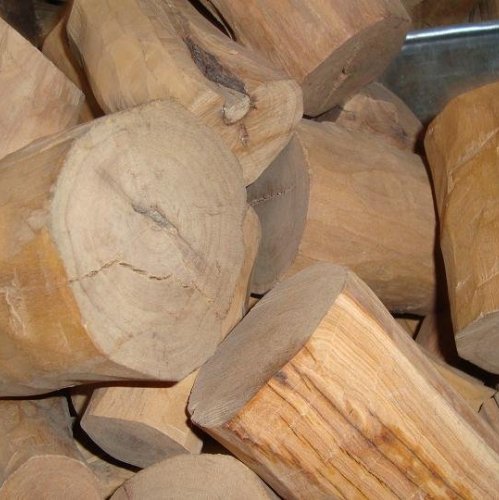





Botanical name Santalum Spicatum
Family Santalaceae
Source Wood
Origin Australia
Processing Method Steam Distillation
Color/Consistency A medium, clear, pale yellow to golden liquid.
Aroma A base note with a medium aroma, Sandalwood is oriental and balsamic with a soft, sweet, rich, woody aroma.
Blends With Bergamot, Black Pepper, Geranium, Lavender, Myrrh, Rose, Vetiver and Ylang-Ylang.
Product Abstract
Sandalwood is a valuable tree associated with Indian culture. It is the second most expensive wood in the world. The heartwood of the tree is treasured for its aroma and is one of the finest natural materials for carving. Sandalwood oil is used in perfumes, cosmetics, aromatherapy and pharmaceuticals. As the tree grows, the essential oil develops in the roots and heartwood, which requires at least 15 to 20 years. Full maturity is reached after 60 to 80 years. The core of dark heartwood gradually develops, which is covered by outer sapwood. The sandalwood tree is never felled, but uprooted in the rainy season, when the roots are richer in the precious essential oil. Vietnam and New Caledonia have well controlled plantations of genuine Sandalwood.
History
One of the oldest incense materials, Sandalwood has been in use for at least 4,000 years. It is one of the most calming incenses and therefore is one of the preferred ones for meditation. It calms the mind, enhances mental clarity, and aids in the opening of the Third Eye. The aroma increases devotion and combined properly can help transmute sexual energy for those who are practicing celibacy. Many ancient Temples and accessories such as rosaries and staffs are made from this wood.
Harvesting/Extraction Information
Sandalwood companies use steam distillation in order to extract sandalwood oil. Steam distillation is a process in which steam heated at extremely high temperatures is passed through the powdered wood. The steam releases the sandalwood essential oil that is locked within the cellular structure of the wood. The mixture of steam and oil then flows through a condenser and cools, yielding a layer of oil and a layer of water. The sandalwood essential oil separates from the hydrosol rises to the top so it can then be collected. The distillation process for sandalwood oil takes anywhere from 14 to 36 hours, longer than for many other essential oils. Despite the fact that this method requires a longer process than other distillation methods, it’s known to produce superior quality oil, yielding 84.32% santalol
Common Usage
Caution
No risks have been associated with sandalwood essential oil, except that it is recommended not to be used raw on the skin. For application on the skin, it should be mixed with some type of carrier oil.
Key constituents
a-Santalol 15.3–17.0%
a-Bisabolol 12.4–15.0%
(Z)-Nuciferol 9.0–14.0%
(E,E)-Farnesol 7.9–8.4%
Dendrolasin 3.3–5.3%
(Z)-b-Santalol 4.6–4.8%
(E)-Nuciferol 2.2–4.8%
(E)-a-Bergamotol 3.8–4.6%
b-Bisabolol 2.9–4.4%
Bulnesol 1.0–3.6%
(E)-b-Santalol 2.9–3.3%
(Z)-Lanceolol 2.3–3.0%
(E)-Nerolidol 0–2.2%
Guaiol 0.4–2.0%
b-Curcumene 1.3–1.5%
epi-b-Santalol 1.0–1.4%
b-Santalene 0.5–1.0%
Safety summary
Hazards Drug interaction.
Cautions (oral) Drugs metabolized by CYP2D6 (Appendix B).
Organ-specific effects
Adverse skin reactions No information found.
Systemic effects
Acute toxicity No information found.
Carcinogenic/anticarcinogenic potential No information! found. (Z)-a-santalol displays anticarcinogenic activity. The oil contains no known carcinogens.
Drug interactions Since a-bisabolol inhibits CYP2D6, there is a theoretical risk of interaction between
Western Australian sandalwood oil and drugs metabolized by this enzyme.
Comments
The commercial oil is most commonly produced by a combination of solvent extraction and steam or vacuum distillation, although extraction alone has also been used, as has steam distillation. Since hexane is the solvent of choice, traces will be present in extracted oils. As can be seen, the extracted and distilled
oils are distinctly different in composition.